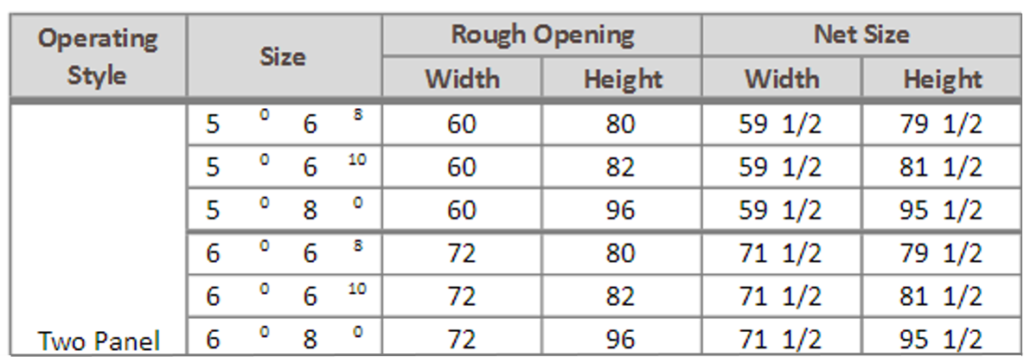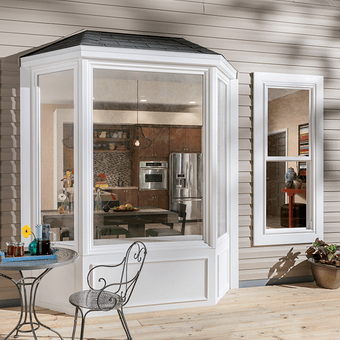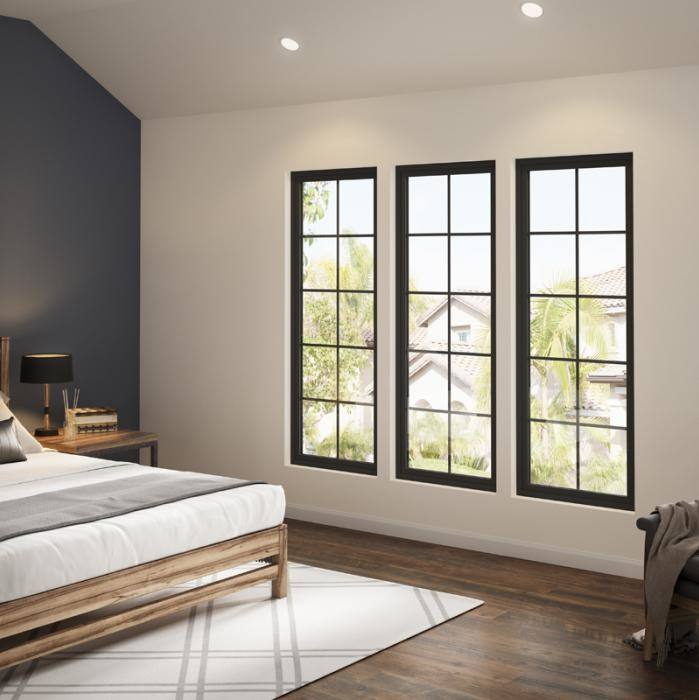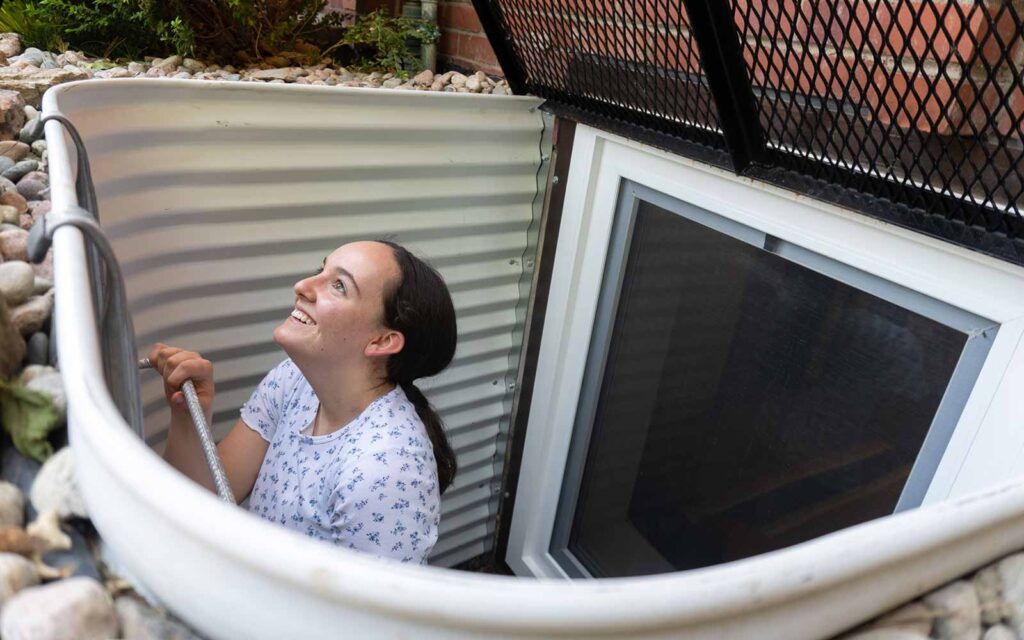Homeowners often face a critical question when considering window replacements: Are replacement windows smaller than the original ones? This article, brought to you by Utah Window Experts, delves deep into the world of window replacements, providing detailed insights to help you make informed decisions about your home’s windows. Let’s get right into it!
Quick Answer
Replacement windows can either be the same size as, or slightly smaller than, the original windows, depending primarily on the replacement method chosen. Full-frame replacement windows are typically designed to match the size of the original windows as they involve replacing the entire window, including the frame. On the other hand, insert replacement windows, which are installed within the existing frame, might be marginally smaller due to the space occupied by the original frame. The choice between full-frame and insert replacements depends on various factors such as the condition of the existing frame, desired window style, and budget constraints.
Table Of Contents
- What are Window Rough Openings?
- Can You Make Window Openings Smaller or Bigger?
- Why Is it So Difficult to Change Window Openings?
- What is a Full-Frame Replacement Window?
- What is an Insert Window?
- What are the Advantages of Professional Installation?
- Which Replacement Window is Right for You?
- FAQ
- Conclusion
What are Window Rough Openings?
Understanding the concept of window rough openings is crucial when discussing window replacements. A window rough opening is the structural opening in a building’s wall where a window is installed. It’s slightly larger than the window unit itself, usually by about half an inch to an inch on all sides. This additional space is crucial for properly insulating and securing the window in place, ensuring a snug and energy-efficient fit.

Can You Make Window Openings Smaller or Bigger?
Altering the size of window openings is a possibility but comes with its own set of challenges. Reducing the size of a window opening involves constructing a new frame within the existing opening, a process that can be relatively straightforward. On the other hand, enlarging a window opening is a more complex task. It requires structural modifications to the building, which can be costly and time-consuming. Such changes often necessitate the involvement of a professional to ensure that the structural integrity of the building is maintained and that the modifications comply with local building codes.
Why Is it So Difficult to Change Window Openings?
The difficulty in changing window openings lies in the intricacies of building construction and code compliance. The window opening is part of the building’s structural framework, and any alterations can impact the overall integrity of the structure. These changes must be executed carefully to avoid compromising the building’s safety. Additionally, local building codes often have specific requirements for window sizes, especially for bedrooms and basements, to ensure safety in case of emergencies.
What is a Full-Frame Replacement Window?
A full-frame replacement window involves replacing the entire window, including the frame, sash, and sometimes part of the interior and exterior trim. This type of replacement is ideal when the existing frame is damaged, deteriorated, or if you want to completely change the style or size of the window.

Advantages of a Full-Frame Replacement Window
- Customization: Allows for significant changes in window size and style.
- Structural Integrity: Provides an opportunity to inspect and repair any hidden damage to the wall or frame.
- Energy Efficiency: Newer frames offer better insulation and energy-saving features.
Disadvantages of a Full-Frame Replacement Window
- Cost: More labor-intensive, requiring more materials, resulting in higher costs.
- Installation Time: It takes longer to install due to the complexity of the process.
- Disruption: More invasive, potentially affecting both the interior and exterior of the home.
What is an Insert Window?
Insert windows, also known as pocket replacements, involve installing a new window unit within the existing frame. This method is ideal when the existing frame and trim are in good condition, and only the window itself needs replacement.

Advantages of an Insert Replacement Window
- Cost-Effective: Less labor and material costs compared to full-frame replacements.
- Quick Installation: Less time-consuming and less invasive.
- Preservation: Maintains the original look of the home, especially important in historic homes.
Disadvantages of an Insert Replacement Window
- Size Reduction: Slightly reduces the visible glass area.
- Limited Customization: Confined to the existing frame’s dimensions.
- Existing Frame Issues: Cannot address any problems with the original frame.
What are the Advantages of Professional Installation?
Opting for professional installation of your replacement windows offers several benefits:
- Expertise: Professionals have the necessary skills and experience.
- Guarantee: Work is often guaranteed or warrantied.
- Compliance: Ensures adherence to building codes and regulations. Learn about our AAMA Certified Installers.
- Quality: High-quality installation improves window performance and longevity.
Which Replacement Window is Right for You?
Selecting the right replacement window requires careful consideration of your needs, budget, and the existing condition of your window frames. It’s also important to consider factors such as energy efficiency, maintenance, aesthetic preferences, and the structural integrity of your home. Consulting with a professional can provide valuable guidance in making this decision. Contact us today and let us help you!
Check out our gallery!






What is an Egress Window?
An egress window is a window designed to provide an emergency exit in case of fire or other emergencies. These windows are particularly important in bedrooms and basements and are subject to specific size and accessibility requirements according to building codes.

Are Expensive Windows Worth It?
While more expensive windows require a higher initial investment, they often offer better quality, longevity, and energy efficiency. Over time, they can provide savings through reduced energy bills, lower maintenance costs, and enhanced property value. Read our blog about how much value replacement windows add to your home.
FAQ
How much smaller is a replacement window?
- The size difference varies. Insert replacement windows can be up to several inches smaller in both width and height due to the existing frame.
How much window space do you lose with replacement windows?
- With insert windows, you may lose a small amount of window space, typically 1-4 inches around the perimeter, due to the existing frame.
What is the difference between replacement windows and regular windows?
- Replacement windows are designed to fit into existing window openings, while regular windows are used in new construction where the opening can be tailored to the window.
Why are replacement windows so thick?
- They are often thicker due to added insulation and energy-efficient features designed to improve thermal performance.
Conclusion
In conclusion, whether replacement windows are smaller than the original depends on various factors, including the type of replacement and the condition of the existing frames. Understanding the differences between full-frame and insert replacements, the complexities of window installation, and the advantages of professional installation can guide homeowners in making the best choice for their homes. Remember, the right window not only enhances the aesthetic appeal of your home but also contributes to its energy efficiency and comfort.